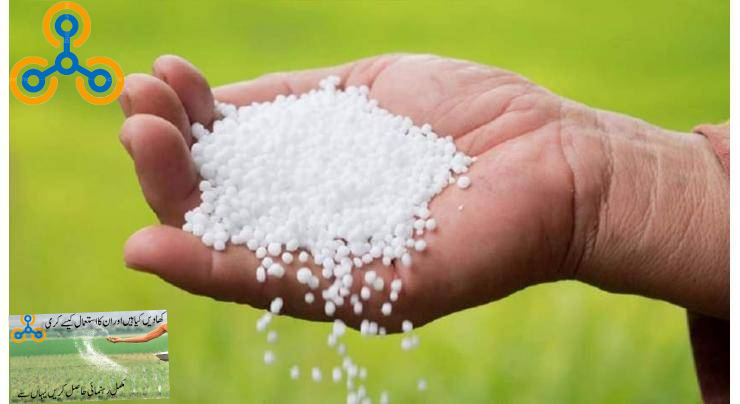Fertilizers are essential components in modern agriculture and gardening, playing a vital role in enhancing soil fertility and improving crop productivity. As the global demand for food continues to rise, understanding what fertilizers are, how they work, and their impact on the environment is more important than ever.
In this article, we will explore the types of fertilizers, their uses and benefits, the scientific principles behind their functioning, and environmental concerns, helping you make informed decisions for sustainable agriculture or home gardening.
Table of Contents
What Are Fertilizers?
Fertilizers are natural or synthetic substances added to soil or plants to supply essential nutrients required for their growth. These nutrients include macronutrients like nitrogen (N), phosphorus (P), and potassium (K), and micronutrients such as zinc (Zn), iron (Fe), manganese (Mn), and copper (Cu).
The main goal of fertilizers is to enhance soil fertility and boost plant growth, thereby increasing agricultural yield and ensuring food security.
Importance of Fertilizers in Agriculture
- Improve soil nutrient levels
- Enhance plant growth and crop yield
- Restore soil fertility in nutrient-depleted lands
- Enable multiple cropping and high-density planting
- Support global food production and agricultural sustainability
Without fertilizers, many crops would not be able to reach their full potential, leading to poor harvests and increased food scarcity.
Classification of Fertilizers
Fertilizers are classified into various categories based on their origin, nutrient content, and release mechanisms.
1. Organic Fertilizers
These are derived from natural sources such as plants, animals, and minerals.
Examples:
- Compost
- Manure
- Bone meal
- Fish emulsion
- Green manure
Benefits:
- Improve soil structure and microbial activity
- Slow nutrient release, reducing leaching
- Environmentally friendly and sustainable
Limitations:
- Slower action compared to synthetic fertilizers
- Nutrient content is often less predictable
2. Inorganic (Chemical or Synthetic) Fertilizers
These are manufactured using chemical processes and provide specific nutrients in concentrated forms.
Common Types:
- Nitrogenous Fertilizers: Urea, Ammonium nitrate
- Phosphatic Fertilizers: Single super phosphate (SSP), Triple super phosphate (TSP)
- Potassic Fertilizers: Muriate of potash (MOP), Sulphate of potash (SOP)
- NPK Fertilizers: Balanced mixtures of Nitrogen, Phosphorus, and Potassium
Benefits:
- Rapid nutrient availability
- High nutrient concentration
- Easier application and transport
Limitations:
- Can lead to soil degradation if overused
- Potential for water pollution through runoff
3. Biofertilizers
Biofertilizers contain living microorganisms that enhance nutrient availability through natural processes like nitrogen fixation and phosphorus solubilization.
Examples:
- Rhizobium
- Azotobacter
- Azospirillum
- Mycorrhiza
- Blue-green algae (BGA)
Benefits:
- Improve long-term soil health
- Reduce dependency on chemical Fertilizers
- Eco-friendly and renewable
4. Slow-Release and Controlled-Release Fertilizers
These fertilizers release nutrients gradually over time, ensuring a steady supply and minimizing losses.
Examples:
- Polymer-coated urea
- Sulfur-coated fertilizers
Benefits:
- Reduce nutrient leaching and volatilization
- Increase nutrient use efficiency
- Require fewer applications

Primary Nutrients in Fertilizers
1. Nitrogen (N)
- Promotes leaf and stem growth
- Essential for chlorophyll production
- Key for protein synthesis
2. Phosphorus (P)
- Supports root development and flowering
- Crucial for energy transfer (ATP)
- Enhances early plant growth
3. Potassium (K)
- Improves water uptake and drought resistance
- Boosts disease resistance
- Strengthens stems and improves fruit quality
Secondary and Micronutrients
In addition to the primary macronutrients, plants need several other elements:
- Secondary nutrients: Calcium (Ca), Magnesium (Mg), Sulfur (S)
- Micronutrients: Iron (Fe), Manganese (Mn), Zinc (Zn), Copper (Cu), Boron (B), Molybdenum (Mo)
Deficiencies in these nutrients can lead to stunted growth, yellowing leaves, and poor yield.
Environmental Impact of Fertilizers
While Fertilizers are essential for agriculture, their overuse and misuse can have severe environmental consequences.
Negative Effects:
- Water pollution: Excess nutrients can runoff into rivers and lakes, causing eutrophication and harmful algal blooms.
- Soil degradation: Continuous chemical application can reduce soil microbial diversity and acidify the soil.
- Air pollution: Nitrous oxide, a greenhouse gas, can be released from nitrogen fertilizers.
- Human health risks: Contaminated water with nitrates can lead to diseases like methemoglobinemia (blue baby syndrome).
Best Practices for Fertilizer Use
To ensure sustainability and efficiency, it’s important to follow these fertilizer best management practices (FBMPs):
The “4Rs” of Fertilizer Use:
- Right Source – Match fertilizer type to crop needs.
- Right Rate – Apply the correct amount based on soil tests.
- Right Time – Apply when crops can best absorb nutrients.
- Right Place – Position fertilizer close to the root zone.
Other tips:
- Use integrated nutrient management (INM) combining organic and inorganic Fertilizers.
- Adopt precision farming techniques and soil testing.
- Encourage the use of biofertilizers and composting.
Global Fertilizer Consumption
As of recent years:
- China, India, and the USA are the top consumers of chemical fertilizers.
- The global fertilizer market exceeds $200 billion and is expected to grow further due to rising food demand.
Challenges:
- Dependency on imports in some countries
- Fertilizer price volatility
- Need for sustainable alternatives
Organic vs Chemical Fertilizers: A Quick Comparison
| Feature | Organic Fertilizers | Chemical Fertilizers |
|---|---|---|
| Source | Natural | Synthetic |
| Nutrient Content | Low to Moderate | High |
| Release Speed | Slow | Fast |
| Soil Health | Improves | May degrade over time |
| Environmental Impact | Eco-friendly | Can be harmful if overused |
| Cost | Low to Moderate | Generally higher |
Conclusion
Fertilizers are indispensable for modern agriculture, ensuring food security and improving crop quality. However, their use must be balanced with environmental concerns and sustainability goals. By understanding the types of Fertilizers, their benefits, and following responsible application practices, we can achieve a productive yet sustainable agricultural future.
Whether you’re a farmer, gardener, student, or policymaker, embracing eco-friendly Fertilizers and scientific practices will help nourish both the soil and society.
